Write Us
We are just a call away
[ LET’S TALK AI ]
X
Discover AI-
Powered Solutions
Get ready to explore cutting-edge AI technologies that can transform your workflow!

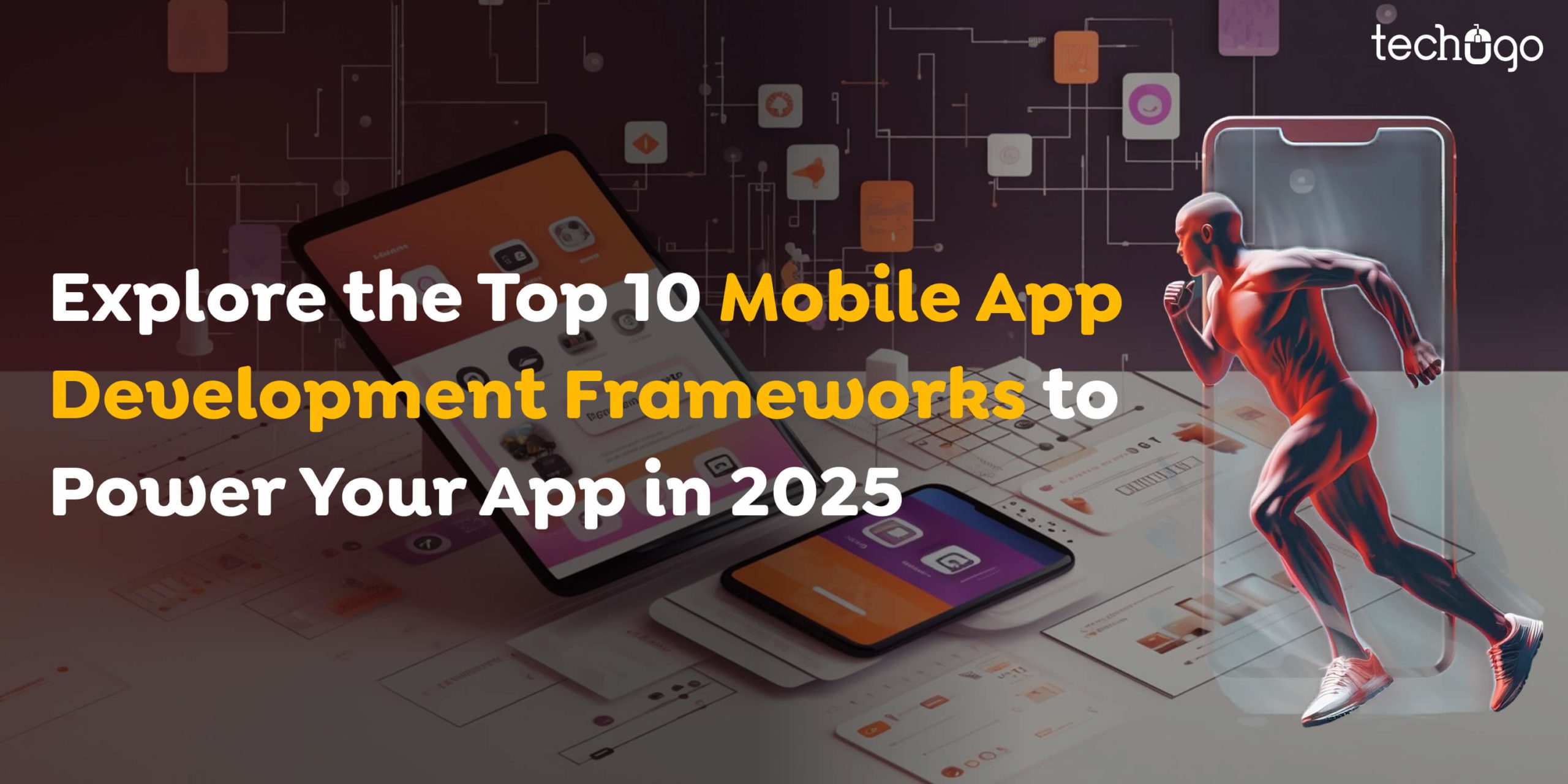
Mobile applications are innovative, and you can seamlessly see how they have taken root in influencing how we go about our everyday lives. These apps have provided user-friendly interfaces for nearly everything one might require, from shopping to booking appointments, calling our loved ones, and watching various entertainment. Therefore, individuals are becoming more interested in non-conventional and inventive application concepts that can address their necessities and inclinations. This newfound interest has led to an exponential increase in the need to develop mobile applications in various fields.
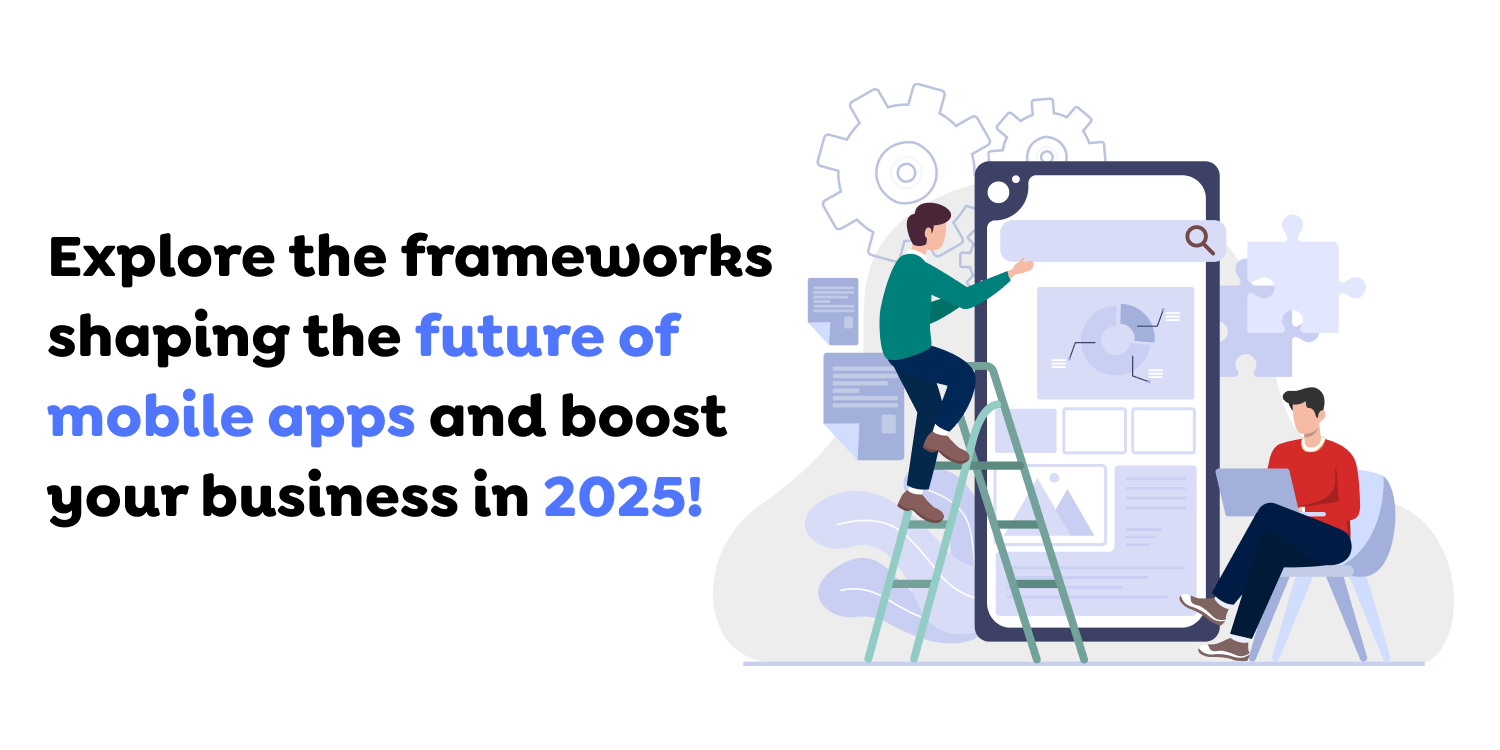
However, there’s a significant aspect to consider: with the increased popularity of applications comes the increased expectation of application functionality, speed, and ease of use. This dual burden has compelled developers and businesses to always look for new state-of-the-art technologies and tools that enable them to develop elegant, functional, and high-performance applications that can meet the needs of contemporary users.
Organizations must incorporate innovation to sustain competition in this environment. Equally important, they must select the correct frameworks and the latest technologies that offer efficiency, reliability, and high-quality user experiences.
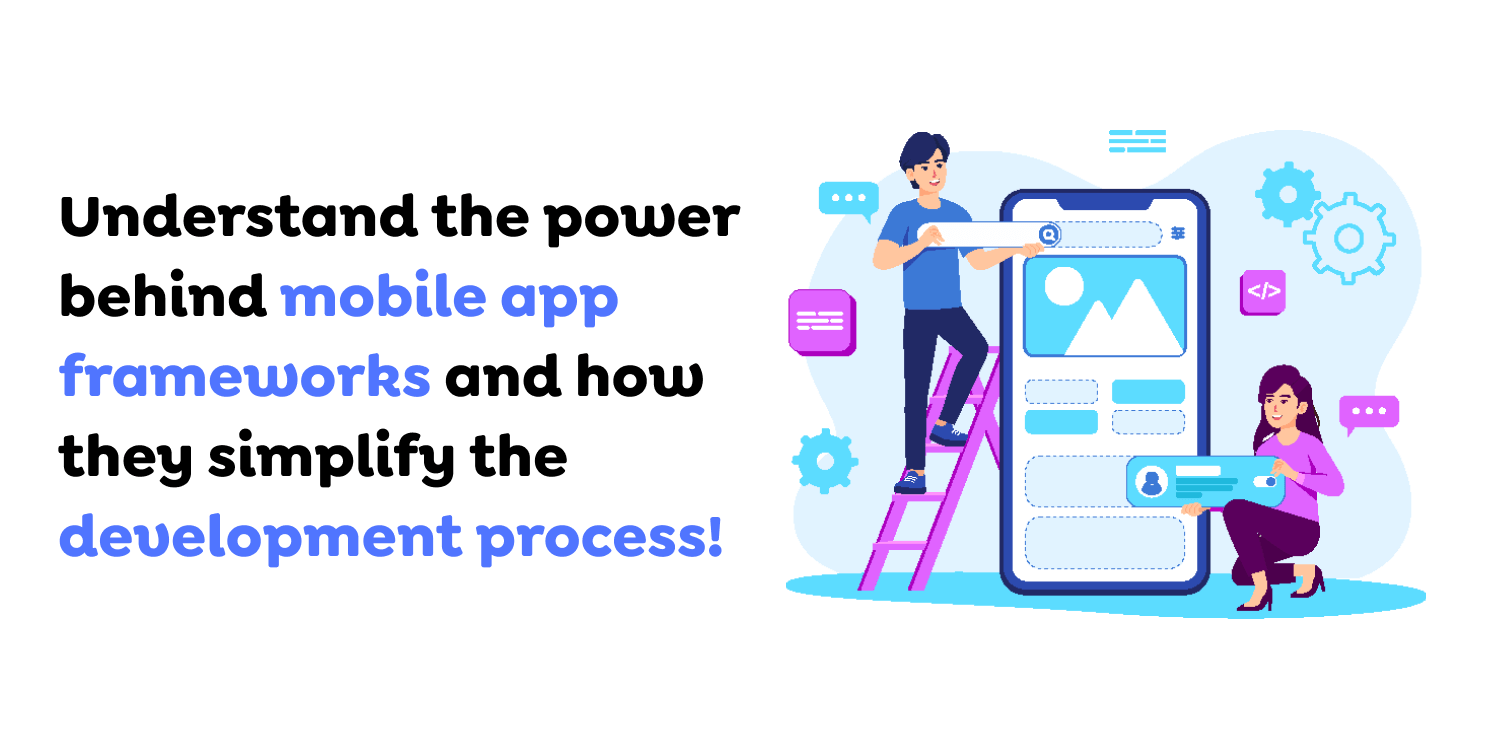
In mobile app development, a framework is a ready-made structure or structure to which the tools, libraries, and coding structures are added, making it easier for developers to build apps. It is more like a laydown plan that can assist in organizing complex work by completing routine procedures and providing ready-made answers to typical complications. Frameworks can also be specific to a platform (such as iOS or Android) or designed to support the creation of apps for multiple platforms at once.
Such frameworks are Flutter, React Native, Swift, Kotlin, and Ionic. The choice depends on the selected platform and project type.
Also Read : Mobile vs. Web Apps: Choose the Right Path for Your Business
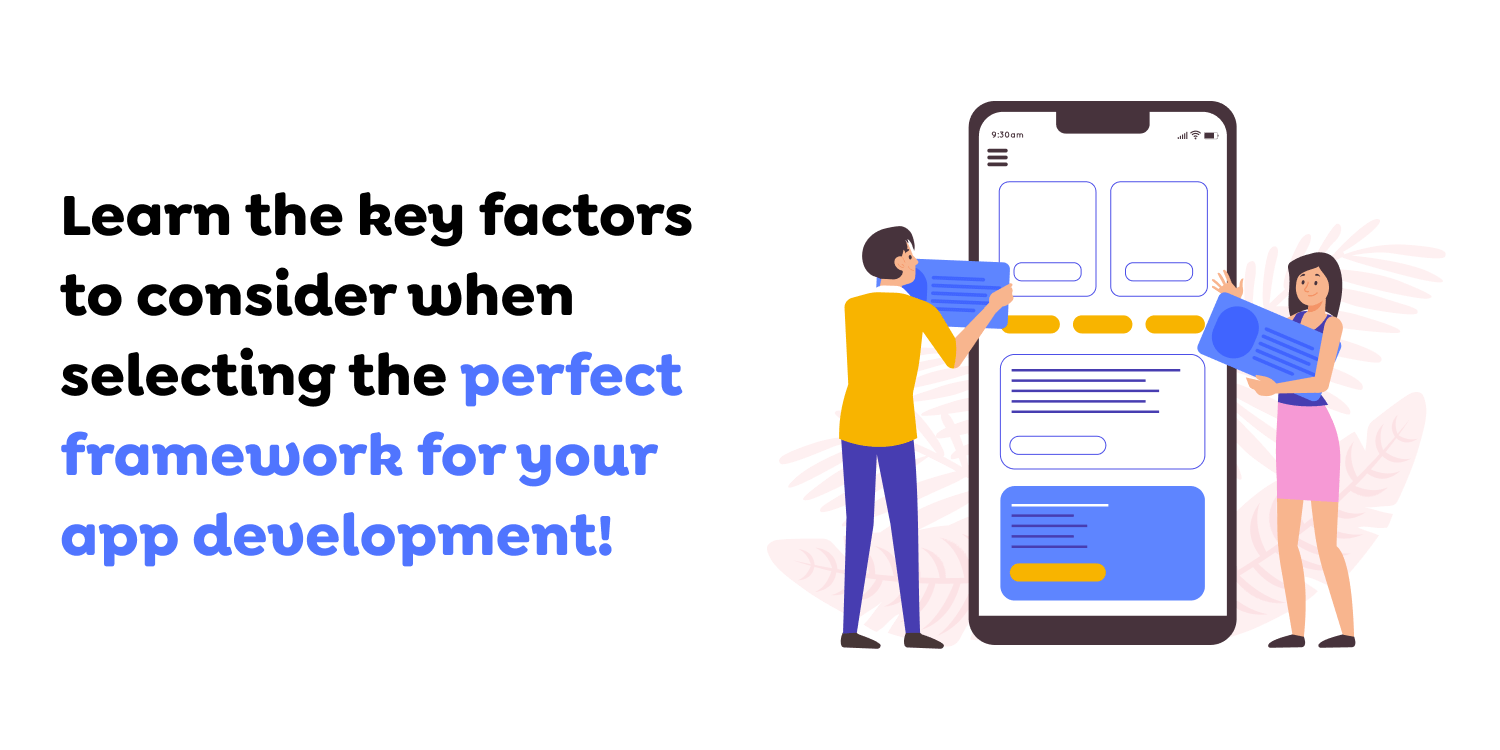
Picking the proper framework for your app is one of the most important decisions you will make throughout the development journey. For this, you need an initial understanding of the needs and wants in your application, the targeted audience that will use it, financial restraints, and vision for the future. Here’s a step-by-step guide to help you make an informed decision:
Start by analyzing the core features and functionalities your app needs:
For example, if you need high-performance animations, consider Flutter. Swift is the best choice for native iOS apps.
Ensure the framework supports third-party integrations for features like payments, analytics, and push notifications. Frameworks with a rich plugin ecosystem, like React Native, can reduce development complexity.
Before committing to a mobile application development framework, build a small prototype or MVP (Minimum Viable Product) to test its capabilities. This will help you identify any limitations early on.
If unsure, seek guidance from experienced app developers or consult a reputable mobile app development company. Which can help you assess your options and recommend the best framework based on your goals.
Also Read : Difference Between React and Vue: Which is the Best JS Framework?
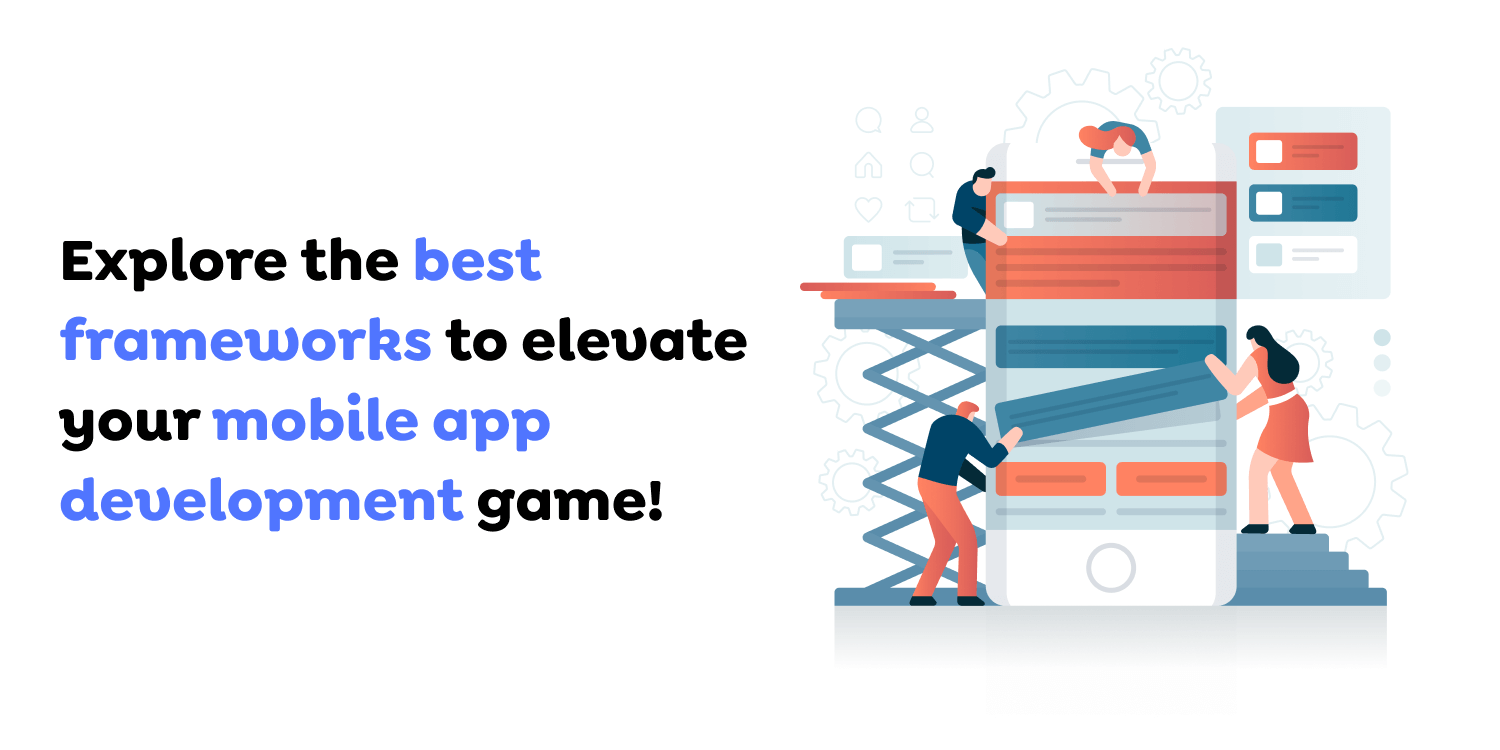
Various top-tier mobile app development frameworks improve performance and speed up development. However, you must pick a framework that fits your requirements. To help you select the best cross-platform mobile app development framework, I have listed some of the best for iOS and Android app development. Take a look.
It is an open-source SDK that allows the creation of high-quality applications. This technology is used for front-end development and enables developers to create beautiful UX designs. Angular and JavaScript are officially integrated with the Ionic framework. It is one of the most well-known platforms today and is positioned at the top of the list of hybrid app development. This framework is very convenient; it utilizes HTML, CSS, and JavaScript for app development. Its powerful CLI makes coding, testing, and deployment easy. If your budget is small, and your application doesn’t need to perform heavy tasks, this platform is best.
Altogether, it is the leading choice for developers because of its capability to create native-like mobile apps.
Also Read : What to Choose for Cross-Platform Development React Native or Ionic?
As its name indicates, this technology is suitable for creating native apps. Moreover, there is no need to code separately for iOS and Android apps; a single code base is allowed. It has native components for both iOS and Android and enables development in JavaScript.
Initially, it was created only for iOS development, but now it is also available for Android application development. Its high-grade libraries can render mobile UIs for both platforms. This is a free development tool that allows faster application creation.
Also Read : How Can the Hermes Engine Help React Native Apps?
Another name on this list is Flutter. This open-source SDK is also very popular among developers using the Dart language for iOS and Android app development. Its many great features, such as hot reload, allow developers to add new features and quickly fix bugs. Its rich set of widgets also enables the creation of a highly interactive interface.
Also Read : The True Cost to Develop a Flutter App: Unlocking Growth and Success
This open-source platform is a one-stop solution for all application development. Being a statically typed programming language, it allows the creation of high-quality apps. Its codes run on JVM and use Java’s libraries, making application architecture robust. Due to the Java libraries, application development is easier and faster. The significant benefits of kotlin are brevity, easy app development, great IDE support, and reliability, making it the first choice of developers.
Also Read : Why Choose Kotlin Over Java For Android App Development?
The Angular mobile app development framework is a TypeScript open-source platform that enables developers to create highly interactive apps. This technology works with JavaScript to make interactive functionalities in the UI. Due to its wide range of features, such as cross-platform compatibility, templates, code splitting, and more, it is highly demanded among developers. A component router helps load the app quickly.
Also Read : React Vs Angular- Which Is Best For Application Development?
Xamarin is an open-source toolset that provides a proven cross-platform application development environment for using C# and .NET to develop iOS and Android mobile apps. This lets developers build apps compatible with iOS and Android using a single set of codes. Xamarin has virtually native speed and a complete open door to native APIs; hence, it is perfect for apps that require high performance and can be accessed on multiple platforms. Also, it has seamless interfacing with Visual Studio; in fact, it offers a comprehensive environment for development.
Also Read : Xamarin vs. React Native: Which Software Should You Choose
PhoneGap is an open source that allows developers to create cross-mobile applications given HTML, CSS, and JavaScript. It enforces the web apps inside a native application shell, meaning the apps can be run on similar environments like iOS, Android, etc. This makes PhoneGap fit well for businesses wishing to take advantage of web technologies in the development of their applications while at the same time not sacrificing performance. As it supports many different plugins, developers can use main device features such as GPS, camera, and storage, which are suitable for various applications.
SwiftUI is Apple’s framework for developing iOS applications, which is closely tied to the Swift language. It offers declarative semantics, which means one has to write less code and, at the same time, develop ultra-fast apps. SwiftUI provides properly designed UI/UX elements tailored to be smooth and adaptive to Apple’s environment, guaranteeing proper app performance and conformity to Apple’s UI/UX trends. Perfect for new apps or apps targeting iOS, SwiftUI is a human-centric framework that brings the power of declarative relationships to app design and user experience, freeing developers primarily from concern about app architecture, data sources, and other intricate details.
Also Read : Get in Touch with a Swift Development Company: Article of Your Dreams!
Unity is a game development tool that supports multiple platforms and can be adapted to creating mobile applications when a 3D or AR function is needed. Currently, Unity is compatible with iOS and Android, so it is the right platform for realistic experiences. Results show that it can proactively deliver high-definition 3-D images and has been embraced in gaming and augmented reality. With Unity, developers can develop applications with multimedia interactivity and real-time rendering that are also entertaining to the user.
Ember.js is a strong open-source javascript framework for mobile and web application development.
Best known for its immaculate convention-over-configuration approach like a glue, Ember.js brings one of the most potent tools for application development – a templating engine to combine HTML and JavaScript, two-way data-binding, and a capable router. Ember.js has been specially designed for creating web applications, but this platform can be adopted for developing mobile applications with the help of extensions such as Ember Mobile. It is ideal for developers who require the quick construction of versatile and progressive portable applications.
Also Read : Why is React Native the Best Choice for Mobile App Development?
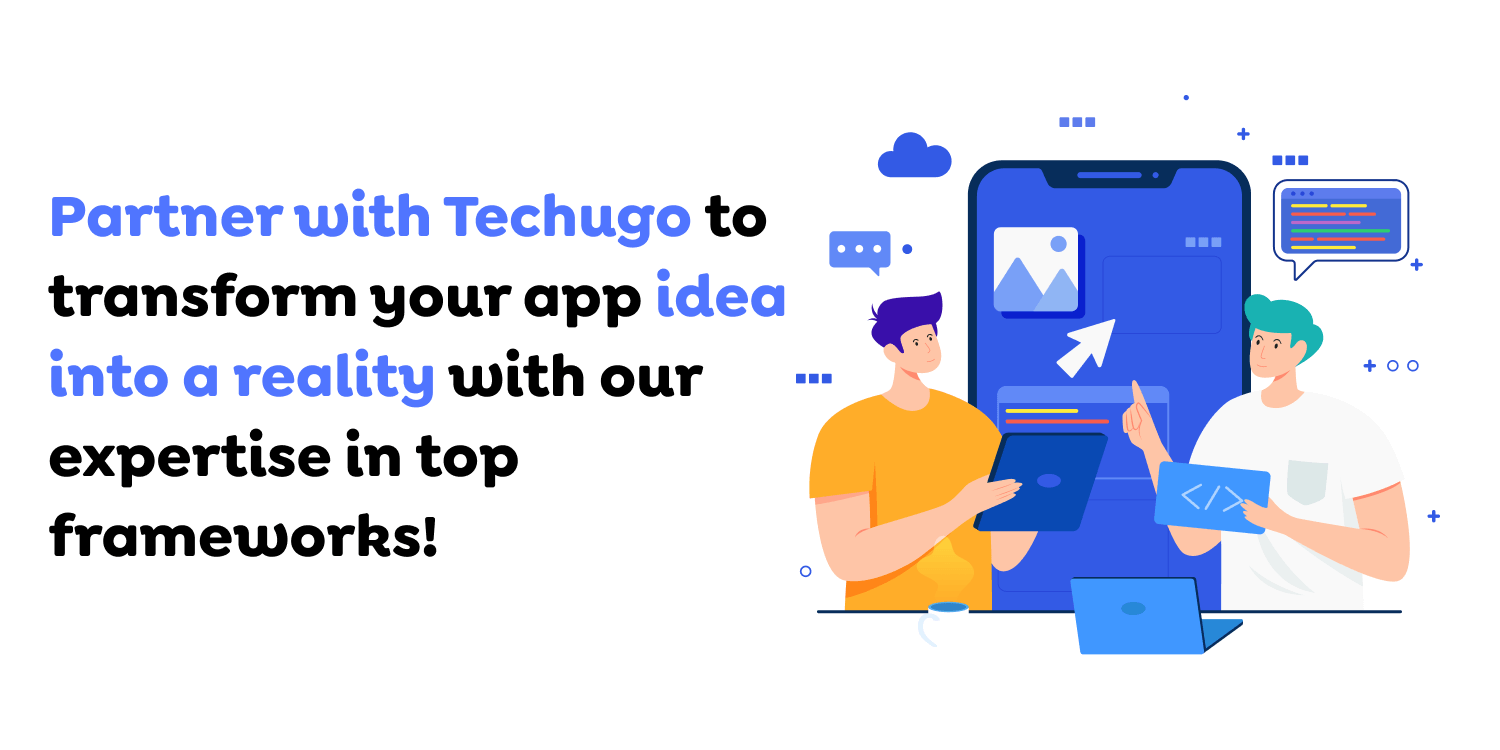
Many other platforms are suitable for mobile app development. At Techugo, we use several application development platforms, including these. Our team of developers is engaged in leveraging the potential of these trending technologies to deliver great application solutions. We have been involved in app building and rendering the best quality assistance & services for years. Owing to our quality assurance team and testers, we deliver top-quality apps with unique features. Our experts use modern technologies like blockchain, AI, and more to offer new-generation solutions. Our clientele includes global leaders who have admired our quality services.
At Techugo, we specialize in custom mobile application development using existing hybrid mobile app development frameworks to provide high-performance solutions. Here’s why Techugo stands out in the competitive mobile app development market:
Also Read : How To Choose The Right Digital Transformation Framework For Your Business?
At Techugo, we constantly explore top frameworks to create the best mobile applications with the best performances and user interfaces. Here’s a look at some of our most recent projects and how we utilized advanced frameworks to develop high-performance, scalable, and user-friendly apps:
Also Read : How to Create a Website Like Boatsetter: Development, Costs, and Monetization Strategies
Also Read : How Much Does It Cost To Develop A Healthcare Mobile App?
Also Read : Elevating the Travel Industry in Saudi Arabia With Vision 2030
At Techugo, we don’t just develop mobile apps; we use the current frameworks and technologies to ensure our clients’ business goals are met. Our experienced software developers, who use a combination of AI, Blockchain, XR, 5G, and other trends, help us launch top-performing and globally competitive apps.
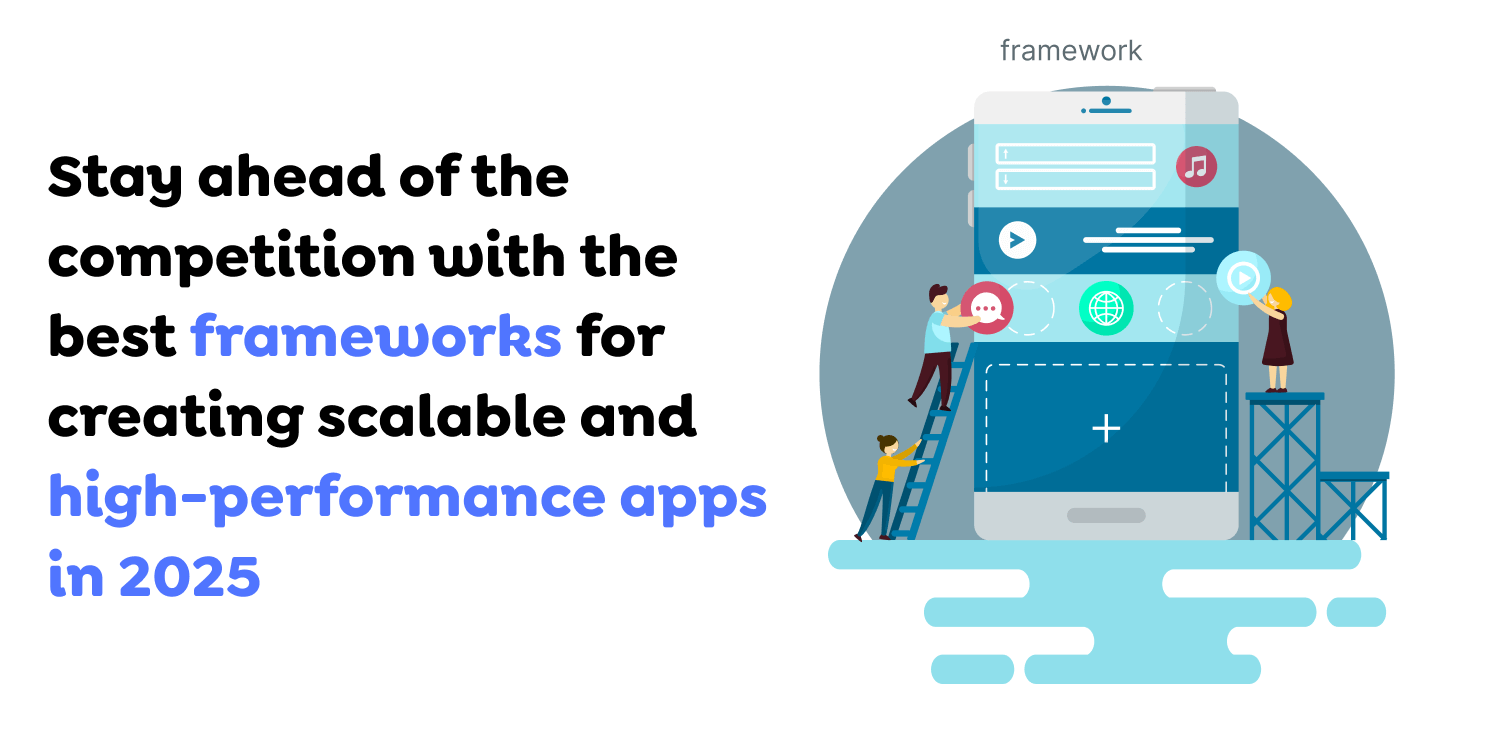
The best mobile app development frameworks for 2025 include Flutter, React Native, Ionic, Kotlin, and Angular; these frameworks are defining the future of mobile app development and pioneering how businesses can best develop and deliver end-user experiences. These robust frameworks can provide many advantages based on the work’s specifics. Regardless of your needs for optimal translation to native performance, multiplatform compatibility, or minimum cost, each framework offers the basic instruments for creating fast and scalable applications to address the business sphere’s new requirements.
Still, each of these frameworks offers something more to the table. The primary value proposition of Flutter is the ability to develop applications quickly, support a highly capable UI, and deploy for multiple platforms while writing the code on them. It is currently the best framework for mobile app development in native mobile app development because it allows for code reusability across different platforms. It is very suitable for businesses that want to grow at a breakneck pace. Ionic is a cross-platform app development that delivers web technologies like HTML, CSS, and JavaScript.
In contrast, Kotlin is the increasingly popular choice for building apps demonstrably made for Android simply due to its speed and flexibility. There is nothing wrong with Cordova/Phonegap. Still, if you want your hybrid mobile application to be more capable and flexible, then Ionic with Angular can be a solid base to start your development.
These frameworks present developers with an array of features or tools that can be used to address the distinctive dynamics of tomorrow’s mobile environment in 2025. They enable businesses to optimize their application development process, engage more users, and increase their device performance. Aspiring to ensure interaction and real-time communication and develop applications across various platforms, these frameworks will be necessary for standing out in a congested and rapidly growing competitive world.
Write Us
sales@techugo.comOr fill this form